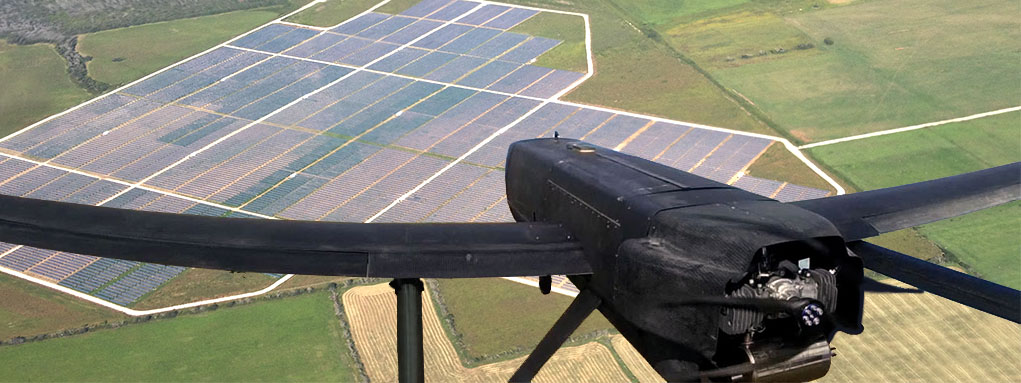There is no doubt that drones constitute one of the outstanding areas of aeronautics today. These devices have been progressively developed since the Second World War and today it seems they are used, and will be used, for much more than spying on the enemy.
The number of pilots and operators registered in Spain by the National Air Safety Agency (Agencia Estatal de Seguridad Aérea – AESA) has grown considerably since the first Royal Decree was enacted in 2014 to regulate the use of drones to the point where courses and university Master’s degrees have been approved. These offer licences to fly drones within the constraints set forth by prevailing legislation, such as not allowing them to fly above urban areas, crowds of people or at night. New regulations, however, are expected that would govern and lay down conditions for some of these constraints.
Evolution cannot be stopped and drones will surely come to form part of our lives in the long run once a solid basis for their use has been created.
Anybody can purchase a drone in the toy section at any store. There is a wide variety of shapes, sizes, configurations and features.
The practicality of these unmanned aerial vehicles (UAV) will be put to the test through a multitude of applications. One of the applications that is starting to be tested is the shipping and delivery of parcels. Correos, the Spanish postal service, has welcomed the idea and run some tests in Spain. There are several similar projects in the USA, which include the use of drones to deliver food and medicines. Rwanda is also looking into the possibility of building a drone base to allow medicines to be delivered by drones. Moreover, the British government has permitted Amazon to conduct drone delivery tests and tests are also being run in France and Switzerland on drone-based mail deliveries, despite the fact that some air traffic and other issues still need to be sorted out.
Drones can fly rapidly above irregular terrain or areas which are difficult to access. They can also overcome any kind of obstacle to offer birds-eye views or any other kind of information gathered by different types of sensors.
The use of drones also seems to be very useful in the agricultural sector. They have been tested to explore and draw up maps of the terrain, monitor fires, keep an eye out on fencing and herds, air fumigation and as conservation aids (which include locating plagues and brushwood), aside from other functions.
Some drones are also used to collaborate on archaeological research. Others are used for geological purposes, collecting samples from inside volcanoes, or for meteorological purposes, taking temperature and humidity readings to make more accurate severe weather forecasts. In addition, some drones are used for health reasons, like taking pollen readings to combat allergies, or even to provide emergency healthcare by considerably reducing health authorities’ reaction and intervention times.
Drones can be categorised according to their mass: drones weighing less than 2 kg, those weighting between 2 and 25 kg and the ones weighing more than 25 kg.
Biology has also benefitted from the existence of drones. They have been used to trace bird migration routes, to study whales without interfering with their habitat and even to monitor coastlines to prevent and reduce incidents involving sharks, for instance.
Drones are robots and can therefore be used to perform tasks which are dangerous for human beings, allowing substances that are harmful to human health to be handled, cleaned and studied. For instance, they were used to obtain accurate views inside the Fukushima nuclear reactor in Japan to prepare a cleaning and future leak prevention plan.
Large government agencies and companies, like NASA or AIRBUS, are studying the possibility of solar‑powered drones doing some of the tasks presently carried out by satellites, like setting up Internet networks in areas lacking coverage. Furthermore, some governments are using drones to control land for tax purposes, border controls, traffic control and to search for people by locating mobile phone positions.
Drones already exist which are capable of taking off from under the water, a capability which opens up a new extensive range of possibilities, like launching them from a submarine or to study marine currents and species.
The commercial utility and perhaps most popular use of these devices is the ability to make images and videos of events. Drones open up a whole new range of possibilities for photojournalism and filmmakers. The use of drones for leisure purposes – simply for entertainment or to compete in races – is becoming increasingly popular by the day. Drones have reached enough maturity to be a success in many fields. Where there is speed, there is competition and spectacular drone races are attracting more and more fans.
And there is still a lot more to come. BOEING has registered a patent that would allow drones to be recharged in mid-flight by means of recharging terminals suspended in the air which are connected to an energy source on the ground by a cable. This concept will serve as a pillar for this sector’s future progress and development. It is clear that drones have come to stay and their uses are growing on a daily basis driven forward by civil society and the scientific community. We are currently going through a boom in creativity concerning these devices’ functions and applications, which really seem infinite.
The advantages arising from the use of the drones are obvious. However, it will be difficult to hear the buzzing sound of one of these devices delivering the mail, a newspaper or a pizza to our front door until the legislation to govern them is enacted. In any case, evolution cannot be stopped and drones will surely come to form part of our lives in the long run once a solid basis for their use has been created.



